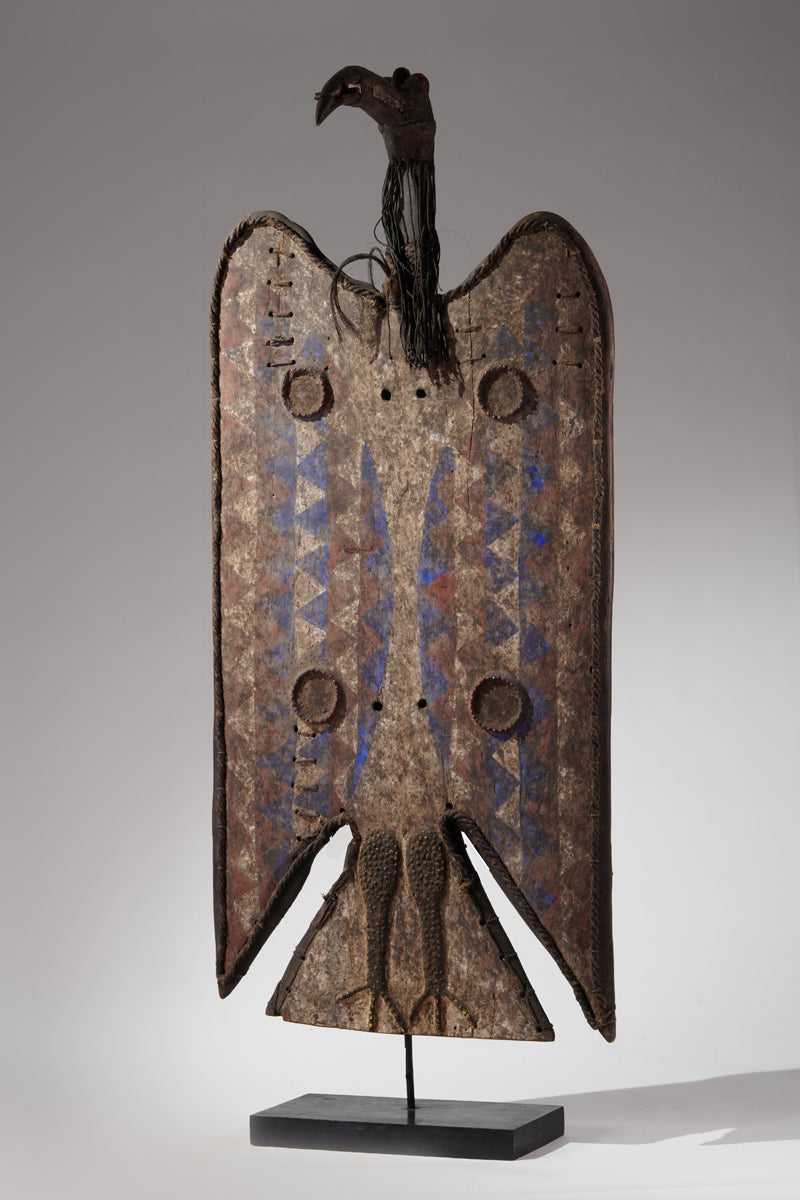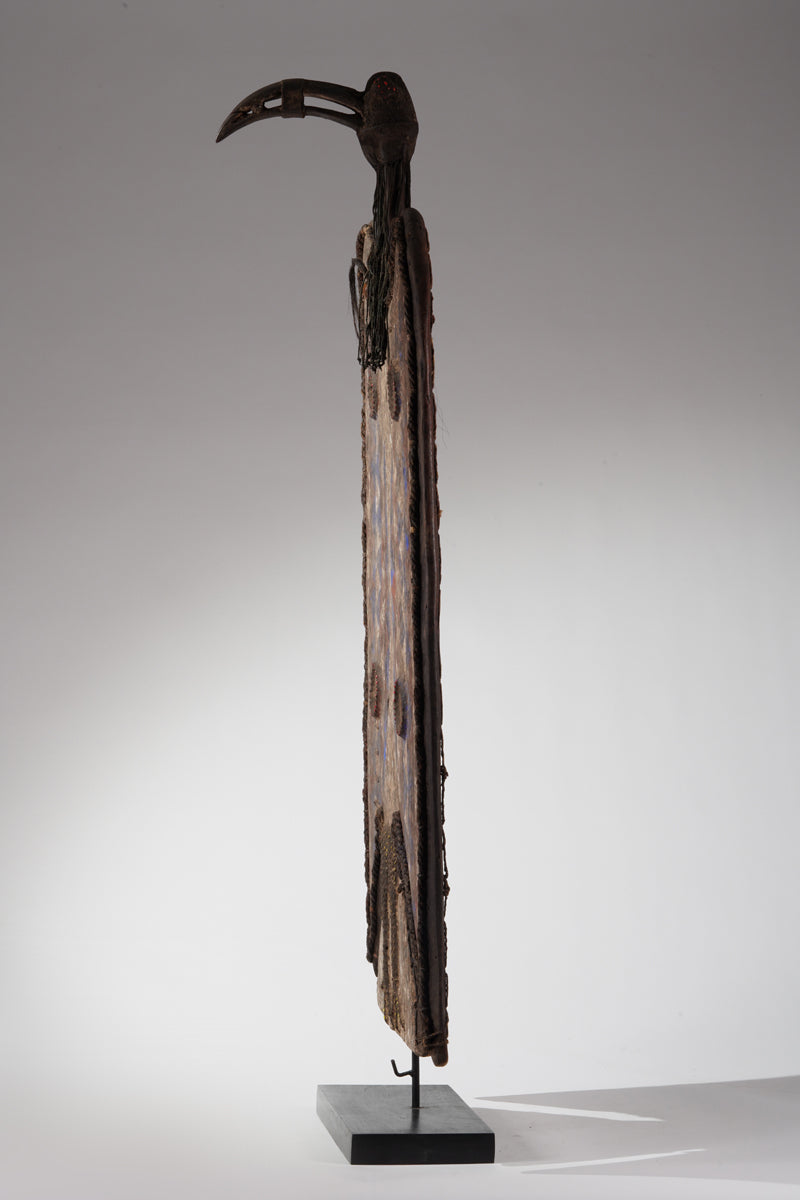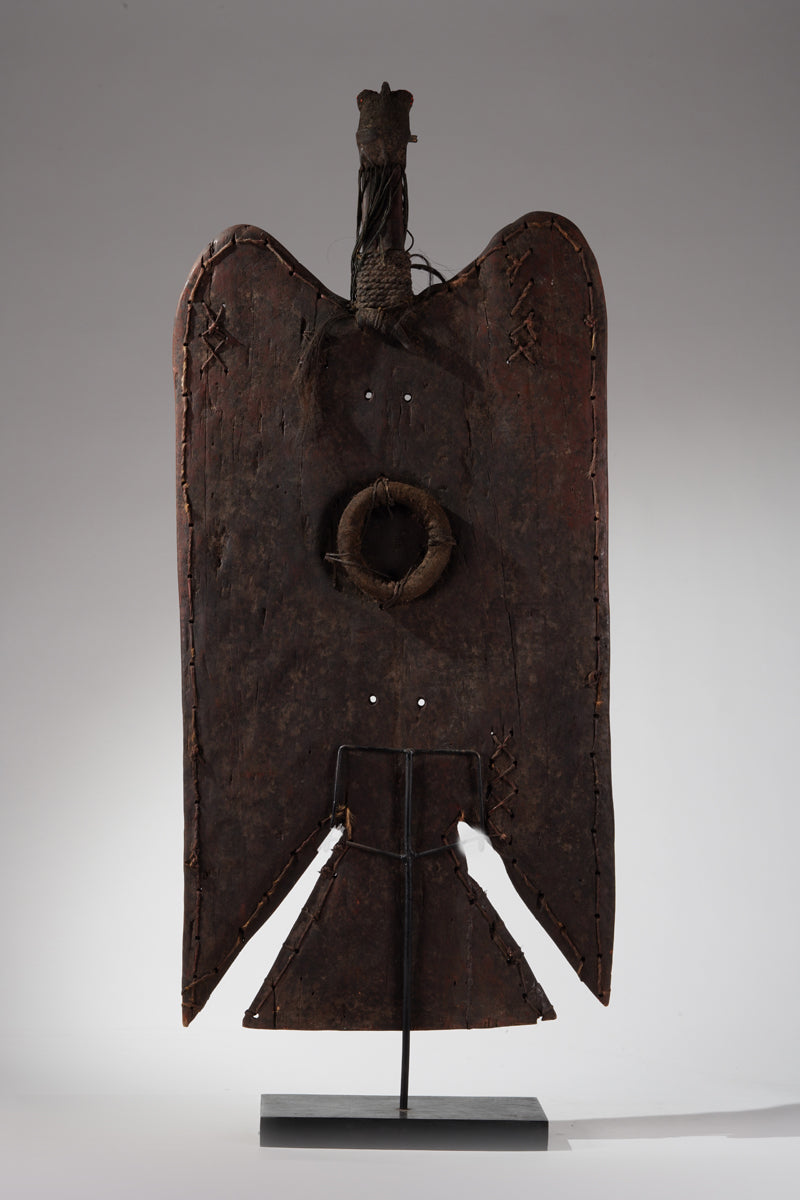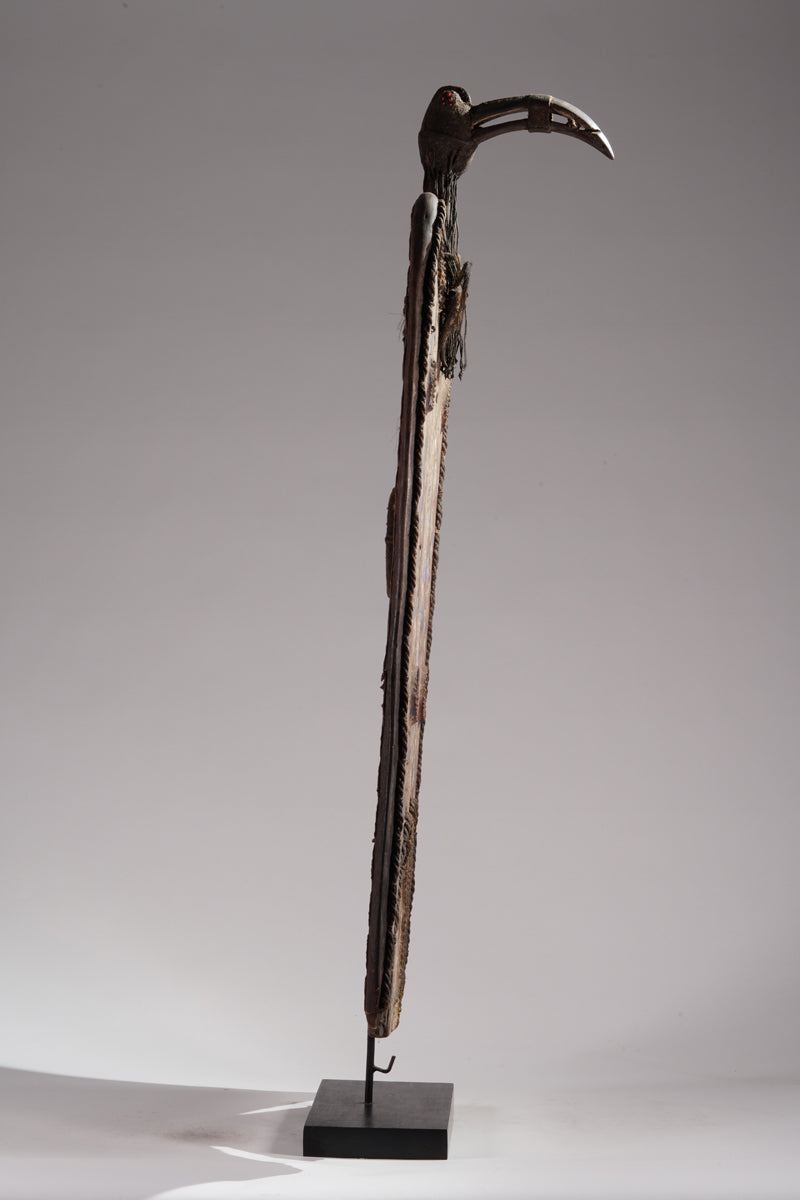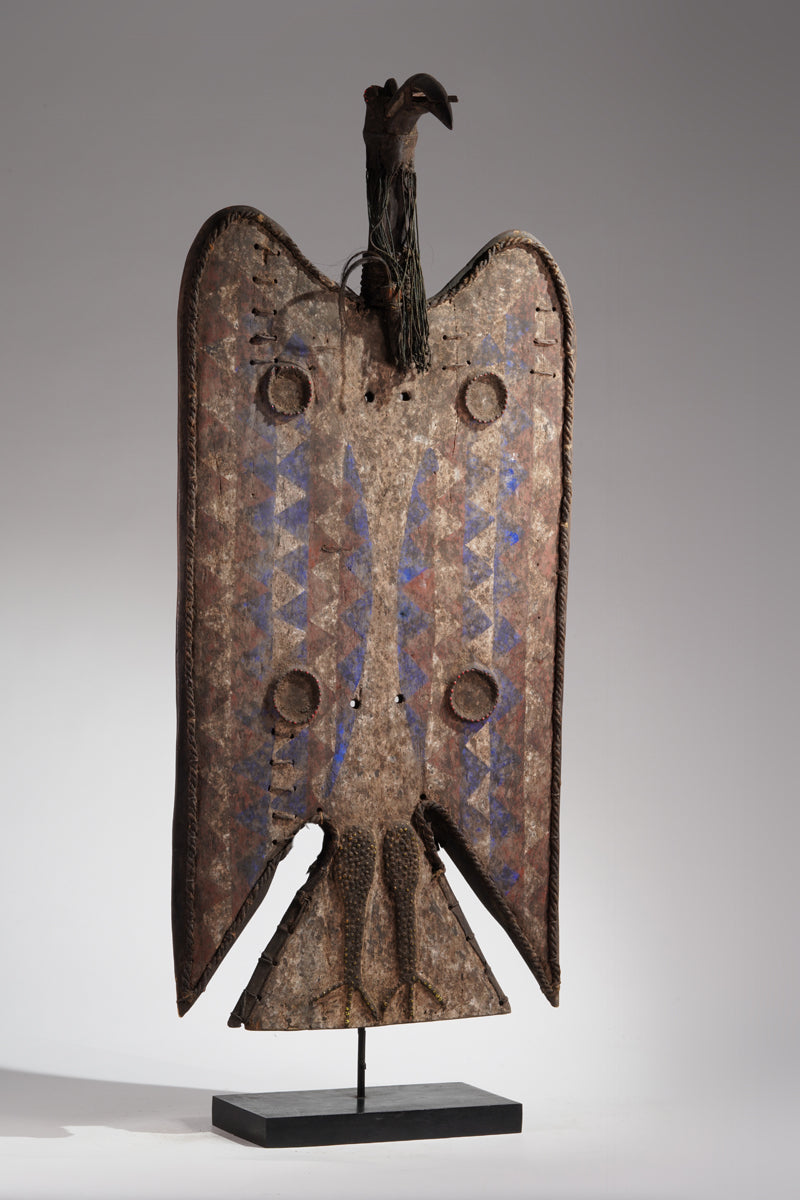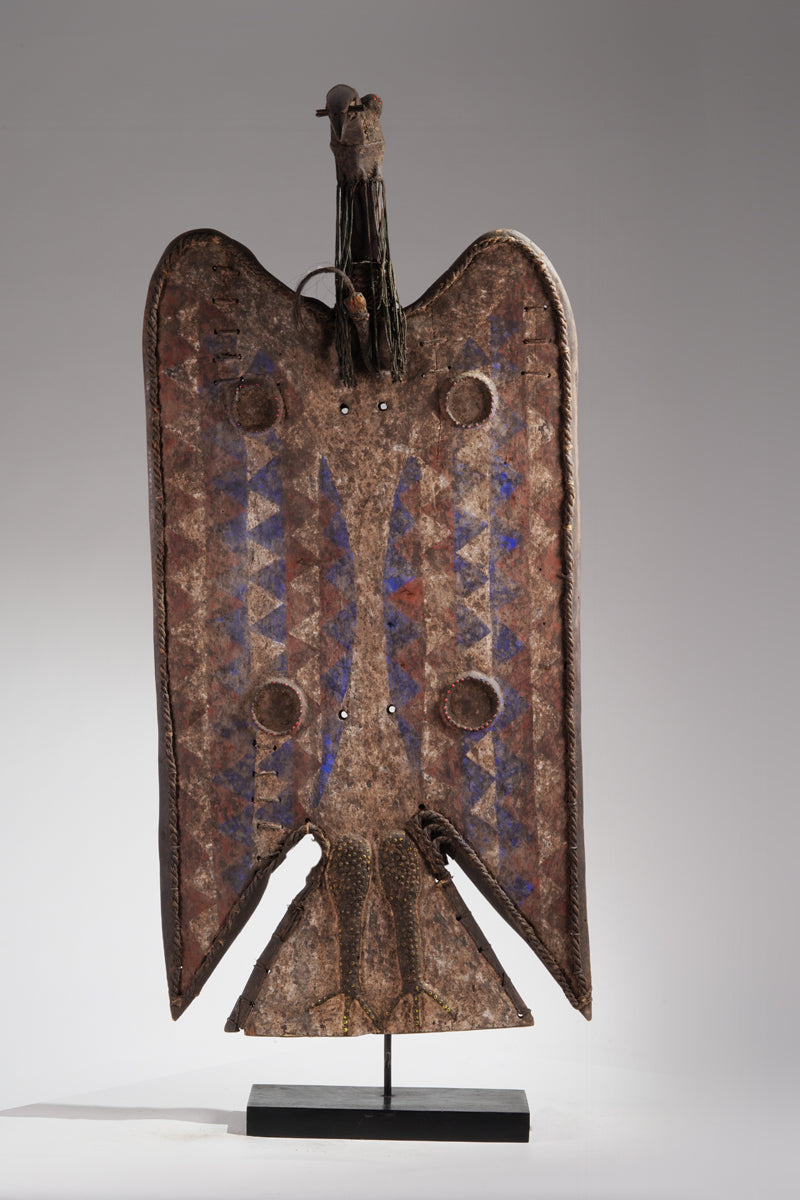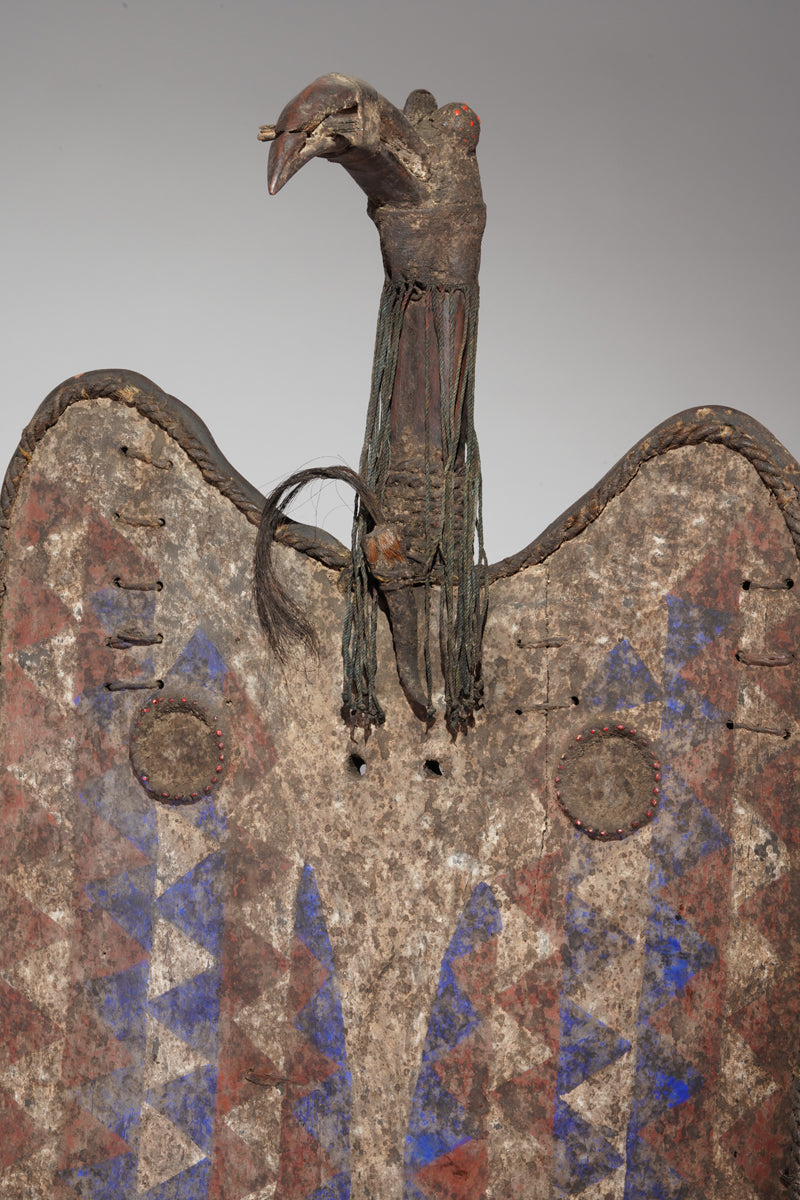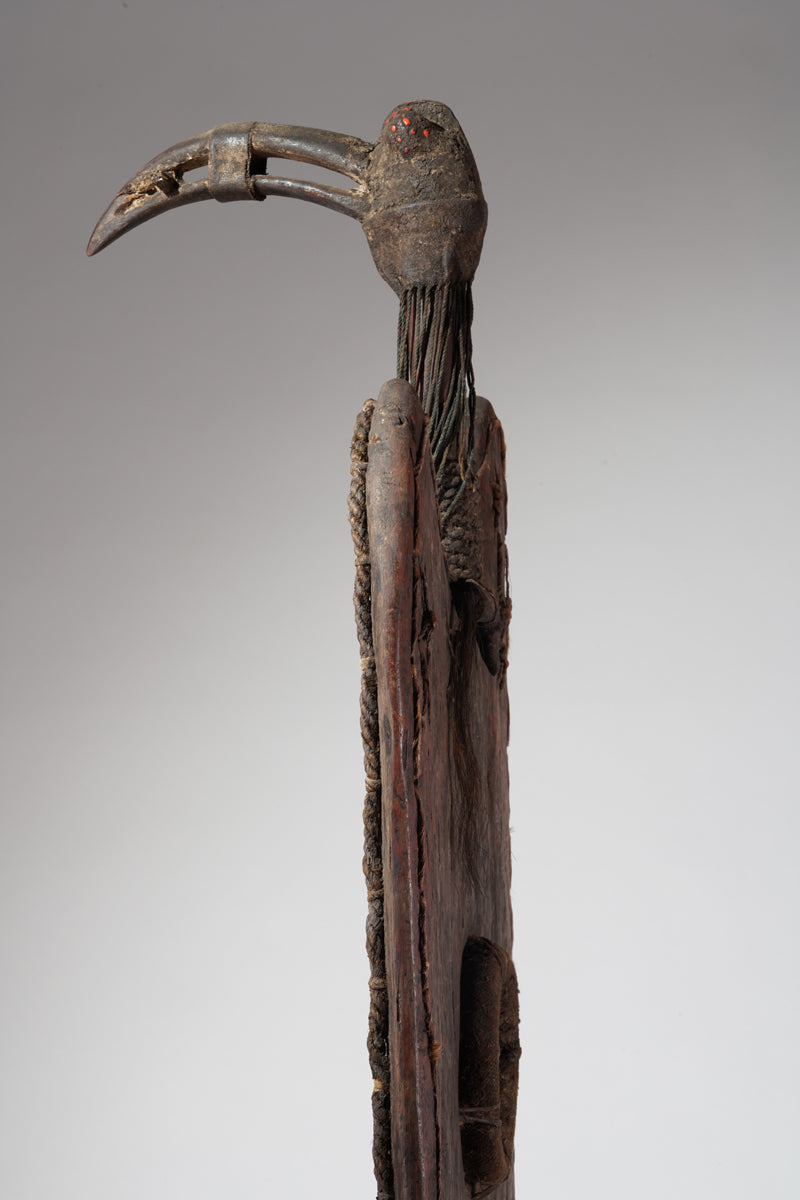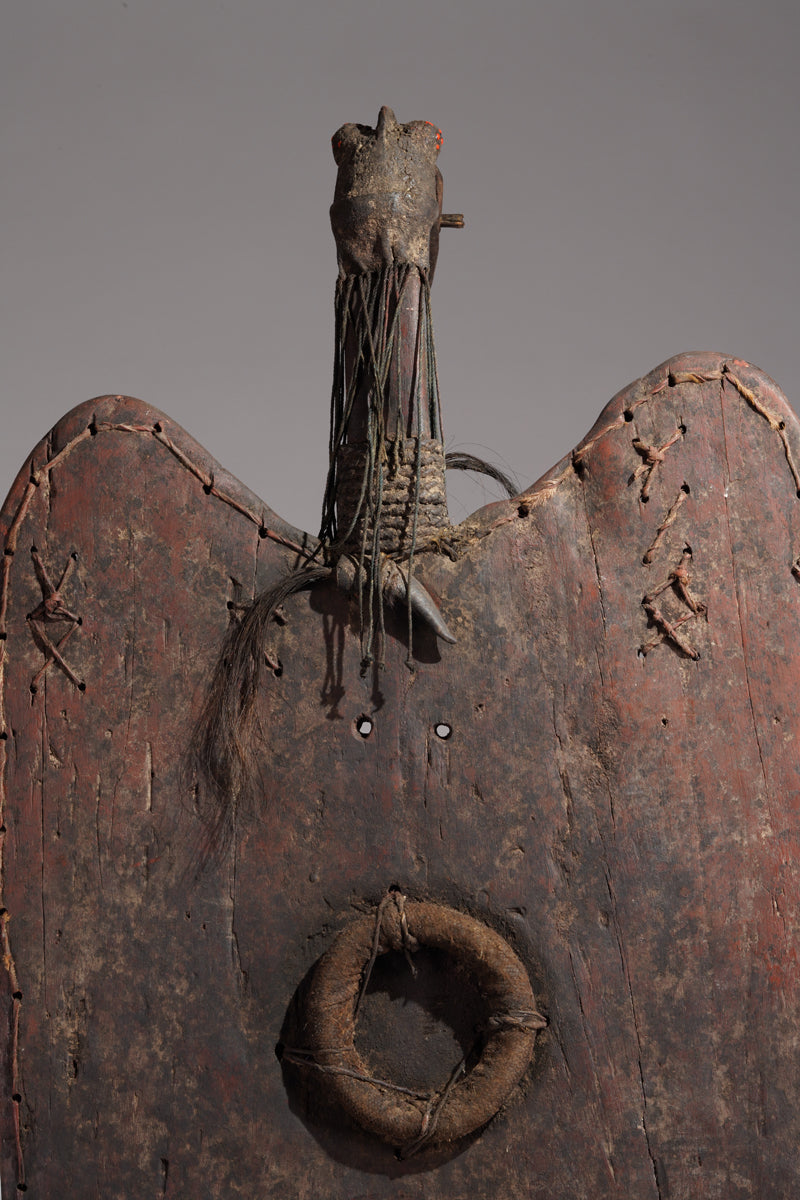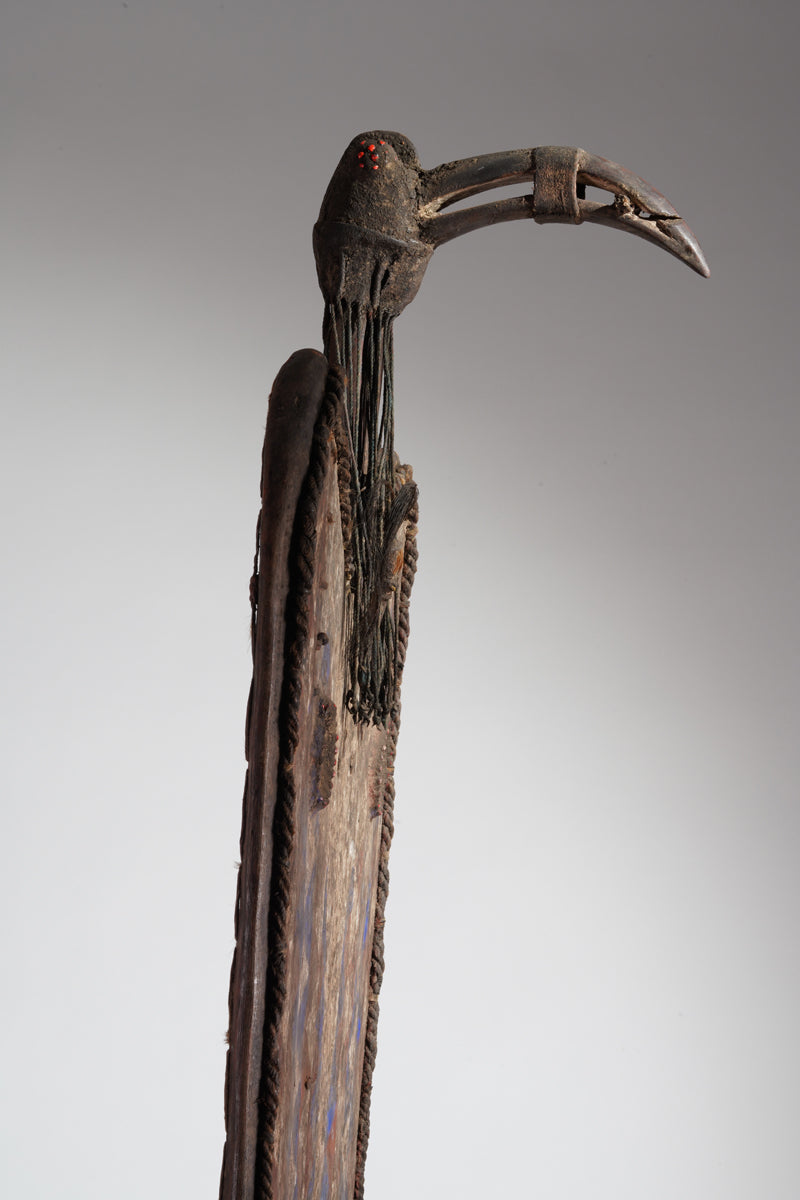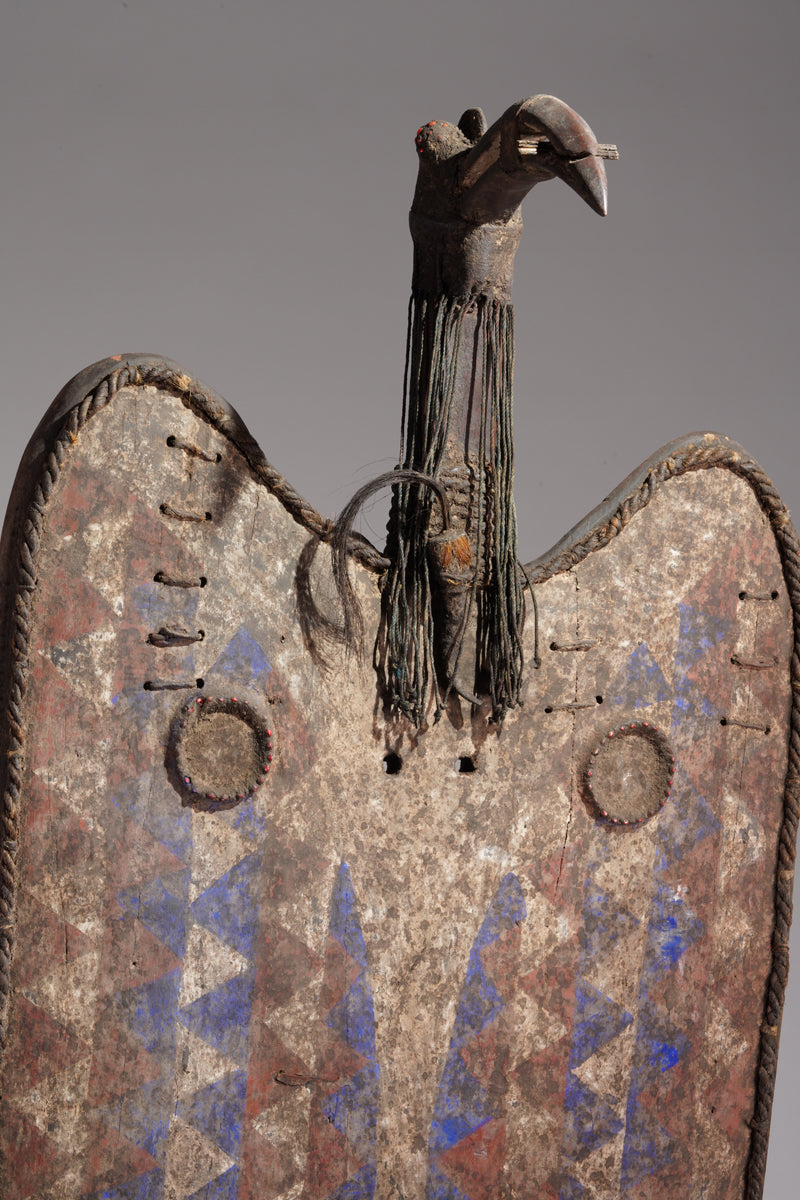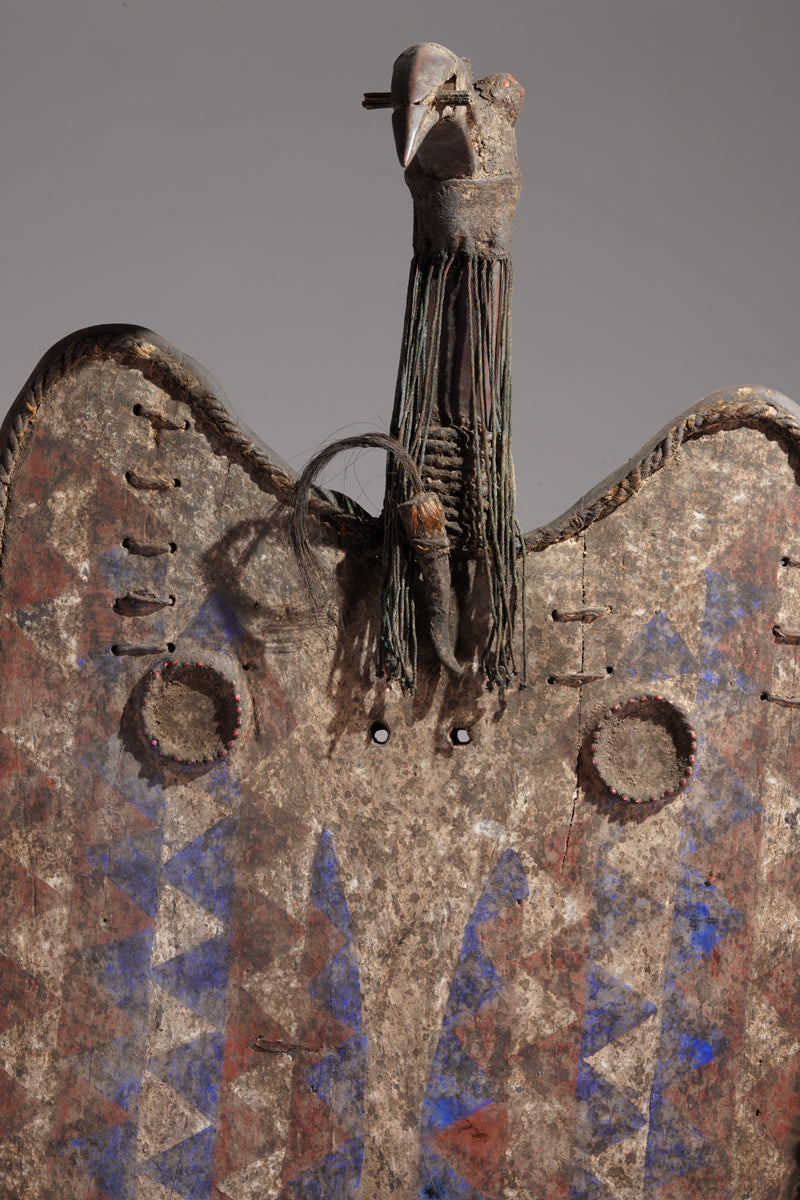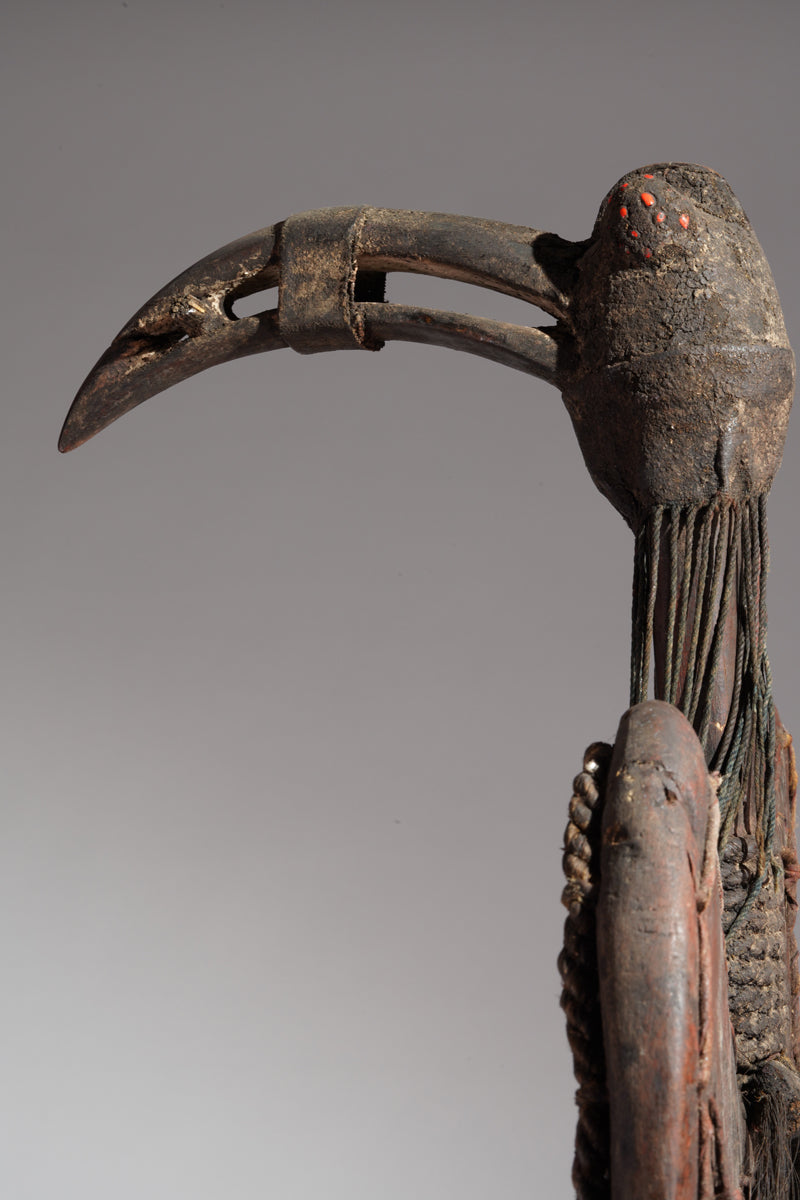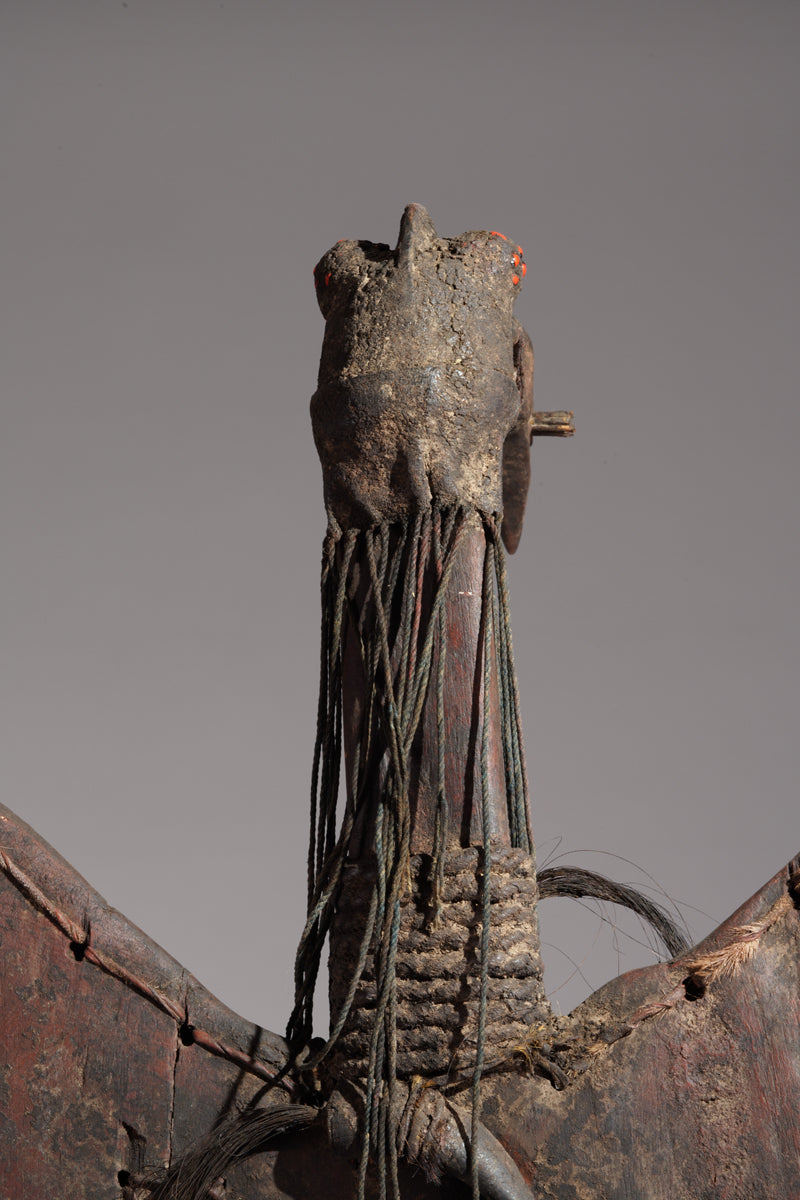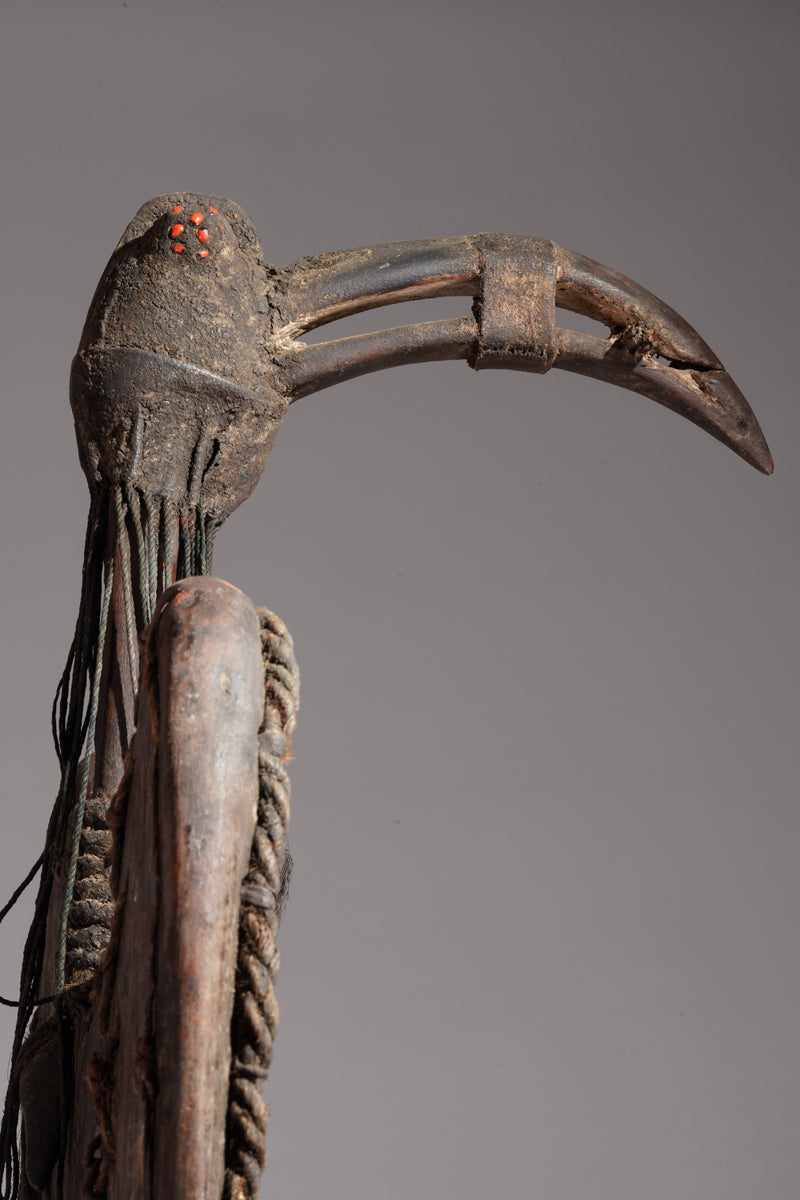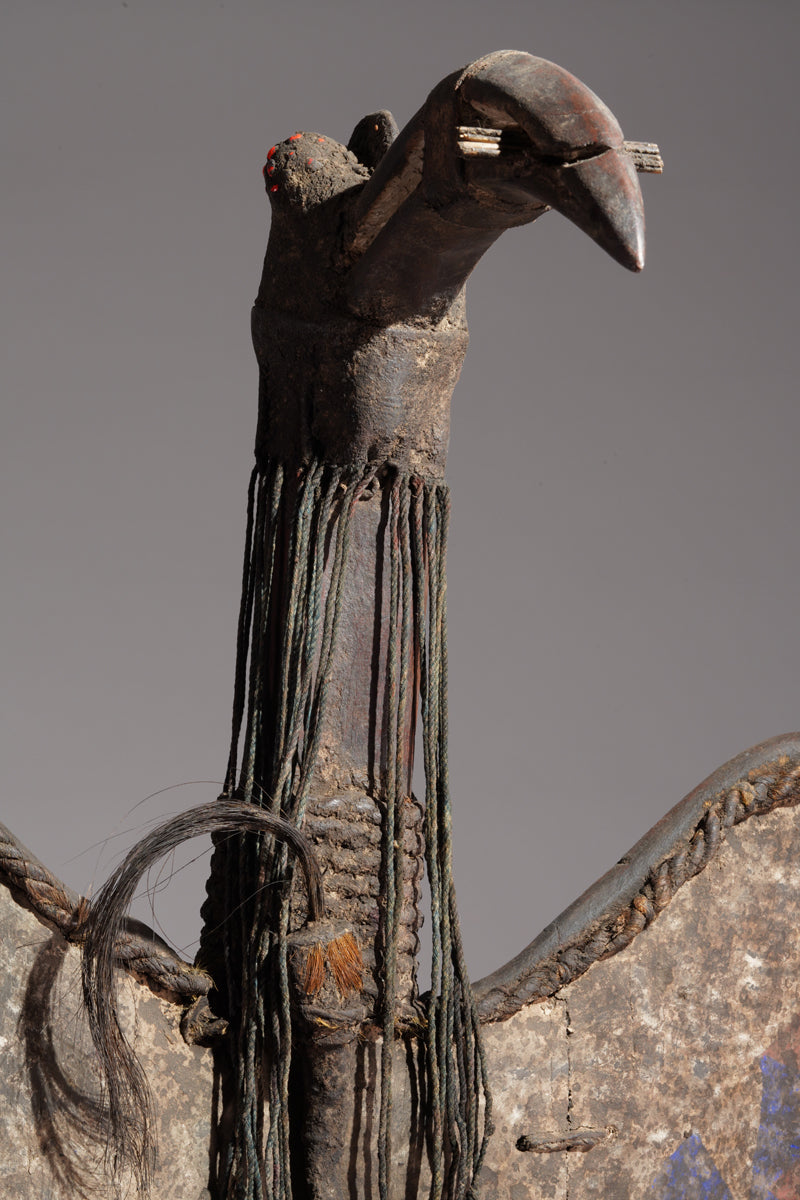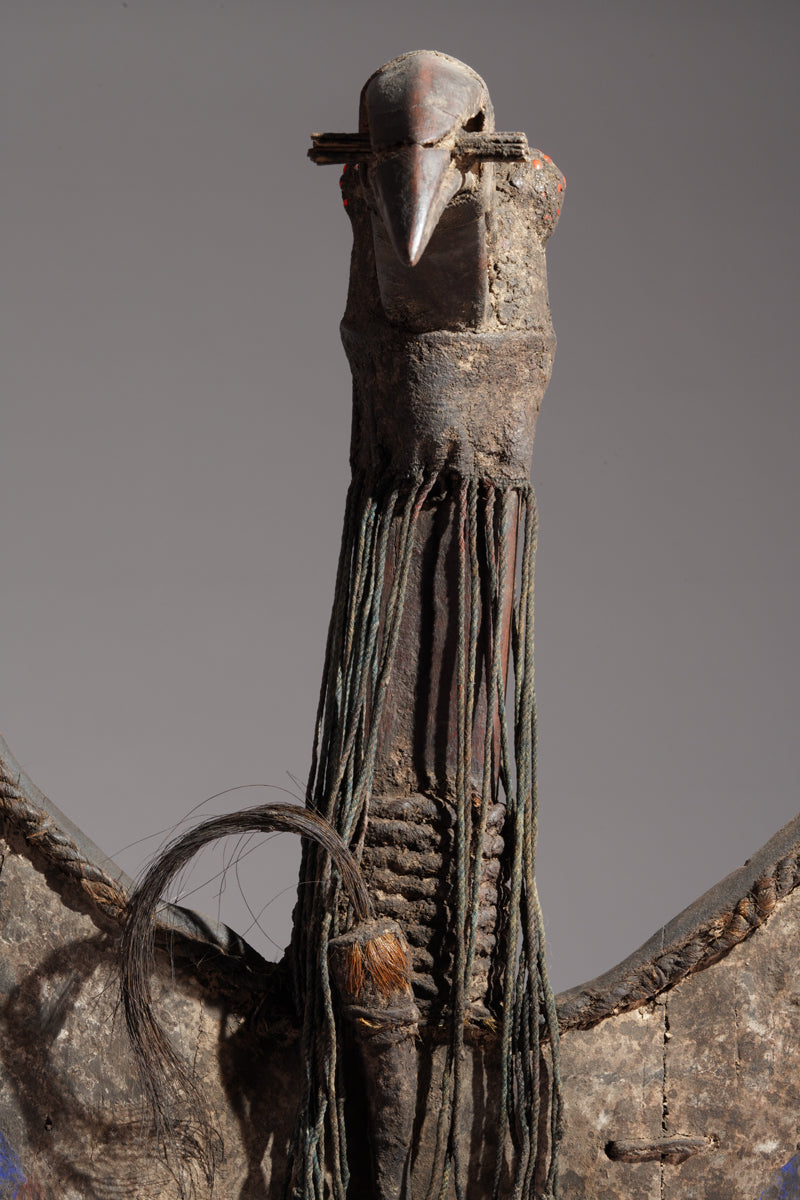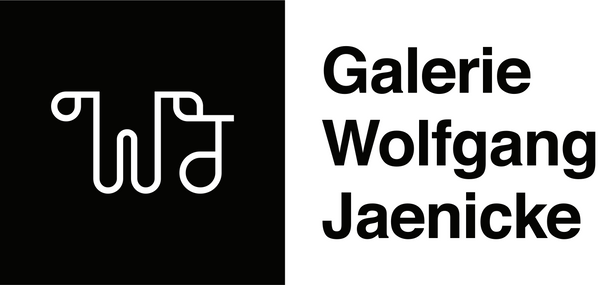wolfgang-jaenicke
A Toussian Plank mask
A Toussian Plank mask
Couldn't load pickup availability
A Toussian Plank mask, Burkina Faso. Signs of ritual use and age.
The Toussian plank mask, originating from the Toussian people of southwestern Burkina Faso, is a notable example of the region’s sculptural and masquerade traditions. Typically carved from wood, these masks are characterized by a long, narrow plank form that is either vertically or horizontally oriented, often with a small, stylized anthropomorphic face integrated into the composition. The plank is frequently decorated with geometric motifs painted in white, red, and black, reflecting a schematic but intentional aesthetic vocabulary shared across various Voltaic cultures.
The mask is generally used in initiation rituals, agricultural ceremonies, or funerary rites, though detailed ethnographic accounts specific to the Toussian remain relatively scarce compared to their more extensively studied neighbors, such as the Bwa or Nuna. It is often assumed that the plank form may reflect spiritual concepts of verticality, transition, and ancestral presence, given the mask’s function in mediating between the visible and invisible realms.
Stylistically, the Toussian plank mask shares affinities with other regional masking traditions in Burkina Faso and Mali, particularly the long masks of the Bwa and the Lobi. Yet the Toussian version is generally more restrained in ornamentation and tends toward more abstract facial features. Some interpretations suggest that the simplicity of form and symbolism speaks to an aesthetic ideal of clarity and spiritual focus.
In museum collections, these masks are often catalogued under general Voltaic or Gur-speaking classifications, though contemporary scholarship increasingly urges more precise ethnic and contextual attribution. A notable example is the plank mask in the collection of the Musée du quai Branly (inventory number 73.1990.40.1), which exemplifies Toussian craftsmanship through its spare geometric articulation and the prominence of a single, central visage surrounded by linear extensions.
Academic discussions of Toussian masking have remained limited, with most available references appearing in broader surveys of West African art such as Roy (1985) or LaGamma (2011), where Toussian works are treated in comparative frameworks. This reflects both the historical lack of sustained fieldwork among the Toussian and the broader challenges of documentation in a region marked by overlapping cultural zones and shifting ethnic identities.
References:
• Roy, Christopher D. Art of the Upper Volta Rivers. Iowa State University, 1985.
• LaGamma, Alisa. Heroic Africans: Legendary Leaders, Iconic Sculptures. The Metropolitan Museum of Art, 2011.
• Bacquart, Jean-Baptiste. The Tribal Arts of Africa. Thames & Hudson, 1998.
• Musée du quai Branly. Collection online. Accessed July 2025.
Height: 125 cm without stand
Weight: 5,6 kg without stand
